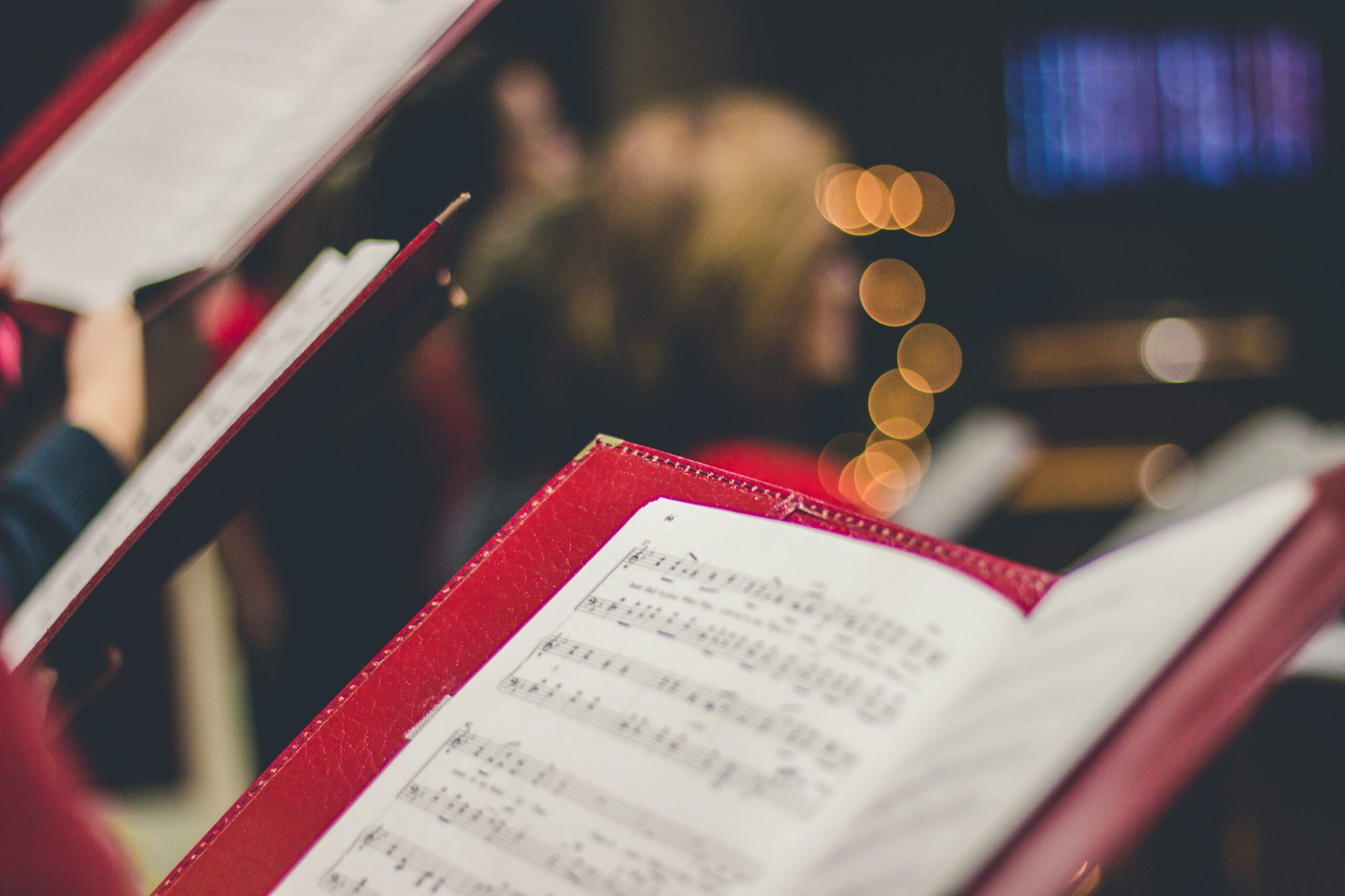It’s every singer’s nightmare: to attend choir practice feeling fine, only to arrive home feeling under the weather and wonder if you’ve unwittingly passed along whatever you have to your fellow choristers.
Group singing increases the risk of spreading COVID-19, so it has been on hold everywhere for months. Even as some churches start to consider reopening, the sound of voices raised together in song likely won’t grace sanctuaries for quite awhile yet. But many music directors, choir members and congregants wonder: what is the church without it?
You may unsubscribe from any of our newsletters at any time.
“Church is singing, to me,” says David Ambrose, the music director at Runnymede United in Toronto. “Being at a service where no one can sing just feels…wrong.”
Donald Hunt, director of music at Christ Church Cathedral in Victoria, says that he sees the loss of singing as a hole in people’s hearts. In an email to Broadview, he described a dream he had recently: “I was in a group of people and an accompaniment was being played to one of my favourite hymns (“Hyfrydol” if I remember correctly), yet I knew I couldn’t join in. I can’t remember now whether I awoke in tears or was simply imagining myself to be weeping. But either way, the hurt was deep. I know that I’m not alone in this.”
Of major Canadian denominations like the Anglican, Lutheran, Catholic, and United churches, none have official guidelines regarding singing in congregations at this time, but some are suggesting different regions make the decision based on local public health guidance.
Currently, science says there is no safe way for groups to sing together without possibly spreading the virus. Many people are aware of the choir rehearsal that took place in Washington state in early March, after which 45 of the 60 singers contracted SARS-CoV-2 and two died.
More on Broadview: Why some United churches are in no rush to reopen
Singers know that they use more of their lung capacity than other people, but in a pandemic, this is a problem. Epidemiologists are saying as much, and earlier this month, the National Association of Teachers of Singing in the U.S. hosted a webinar with experts from a range of fields to help choir directors and singing teachers understand why.
Heather R. Nelson, a singing teacher and vocologist who has been following the scientific research about the spread of COVID-19 via aerosol since the pandemic hit North America, explained to Broadview why group singing is such a threat.
“Even amateur singers tend to take in deeper breaths when they sing, or when they’re preparing to sing,” Nelson says. “We have a tendency to breathe in deeper, which means we’re just taking in more air, and that air tends to go further down into our lungs.”
This is potentially a problem with a lower-respiratory-tract virus like COVID-19, she says. In terms of spreading the virus, she says that the forceful breathing that takes place when you sing is very different from the type of breathing that people do day-to-day, called tidal breathing.
“So we have the potential for basically spreading things a little farther than we would if we were just sitting next to someone,” Nelson says. “That’s the prevailing thought right now.”
A growing body of scientific literature supports this theory. Enough so that when Germany reopened its churches early this month, it also banned communal singing in those spaces.
Canada has not issued any such edict, and as mentioned earlier, a number of major denominations have no official stance as of yet. It’s clear, however, that the thinking is the same.
“Personally, although it breaks my heart to see our communities go without communal song in the near future,” wrote Bruce Harding, executive director of Music United, an association that supports United Church music ministries, in an email to Broadview, “many of us in the musical community have already seen many articles in recent weeks explaining how dangerous singing in a group is.”
Music United is currently providing support and resources to help church musicians determine the best path forward for their own congregations.
Monsignor Murray Kroetsch, chancellor for the Roman Catholic Diocese of Hamilton and an advisor to the Canadian Conference of Catholic Bishops’ national hymnal, believes it’s important for music to continue in some form in the church. “What we have been recommending in many of our parishes is that there is only a cantor and instrumentalist,” he says, which ensures that they are at least and often more than two metres apart.
“We can at least have music because we believe that music is integral to the liturgy; it’s not an extra,” Kroetsch says. “And we’ve been spending so much time in the last 60 years trying to promote congregational singing. We don’t want to just lose altogether.”
Ron Klusmeier is a musician and composer well-known throughout the United Church for the many hymns he wrote in Voices United and More Voices. He is currently the accompanist at Brechin United in Nanaimo, B.C. and shared his thoughts about the pandemic’s impact on church singing.
“I’m really quite concerned about it,” he says, “because singing has been such an important way we share and express our faith and our stories.”
Klusmeier recalls that one of his writing partners once told him that he believes we learn our theology in two ways. “One is through the spoken word, in terms of Scripture and story, and the other is what we choose to sing,” he says. “Because the whole business of the texts we sing, it’s our story.”
“Being at a service where no one can sing just feels…wrong.”
Indeed, whether it’s the words in the hymn, Blessed Assurance, “This is my story, this is my song,” or How Can I Keep From Singing, music and singing are in congregations’ DNA. For many people, it’s hard to imagine separating music from worship, but even church finances during COVID-19 may have an impact on music programs. Beach United in Toronto recently laid off its entire programming staff, which included music director Steven Webb. Webb was unavailable for comment.
For now, some churches are getting the music out to their congregations in creative ways. Ambrose brings in his organist and soloists once a week to prerecord all music for that week’s service. The individual soloists are on a rotating weekly schedule, and they maintain a large distance from the organist and Ambrose himself, who records the video. Then the organist plays the week’s hymns with Ambrose singing the melody.
But like many church musicians, Ambrose doesn’t foresee choirs or congregations singing together any time soon, while a vaccine for COVID-19 is still unavailable. “My gut is saying that we’re probably looking at 2021,” he says.
British Columbia now allows small groups to come together, including when singing (with appropriate physical distancing), so Christ Church Cathedral’s “online services can once again be adorned by four-part harmony sung by a quartet,” Hunt writes.
If there’s one glimmer of light, Klusmeier says it’s that people have very suddenly become aware of what congregational and choral singing means to them.
“And so, in that, I see some hope,” he says. “I think that’s something entire congregations are going to look forward to, whenever it is we’re able to get back, no matter how painful the time in between is.”
EDITOR’S NOTE 09/07/2020: This story was substantially updated to include perspectives from other Christian denominations.
Broadview is an award-winning progressive Christian magazine, featuring stories about spirituality, justice and ethical living. For more of our content, subscribe to the magazine today.














